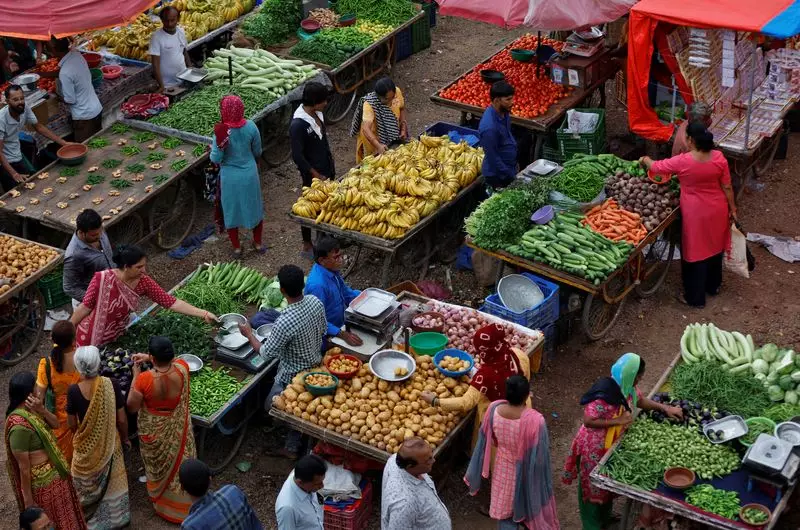The Reserve Bank of India (RBI) finds itself at a critical juncture as it prepares for its monetary policy meeting on December 6. Economic indicators paint a complex picture, with an unexpected surge in consumer inflation prompting many economists to revise their forecasts for interest rate cuts. This article delves into the current economic landscape, the factors influencing the RBI’s decision-making, and the implications for India’s broader economic health.
October’s retail inflation in India exceeded the RBI’s upper tolerance threshold of 6%, primarily due to escalating food prices, raising concerns about the impact on consumers and the economy at large. The RBI’s responsibility is to maintain price stability while supporting economic growth, but as inflation spirals, this balance becomes increasingly precarious. Food inflation’s influence on overall price dynamics has been significant, especially given the volatility associated with agricultural produce.
According to a Reuters poll conducted in late November, a substantial majority of economists—62 out of 67 participants—predict that the RBI will maintain the key repo rate at 6.50%. The sustained inflationary pressures have shifted sentiment dramatically from previous expectations of a potential cut this December. The re-evaluation underscores a more cautious approach by the RBI, aligning with Governor Shaktikanta Das’s recent comments about the risks of prematurely cutting rates amidst unstable price conditions.
The RBI’s pivot to a ‘neutral’ monetary policy stance in October indicated a willingness to reassess its approach, yet the lingering fears surrounding inflation have tempered calls for immediate rate cuts. Das’s relatively hawkish stance suggests a reluctance to incentivize borrowing at a time when inflation not only exceeds desired levels but also poses threats to economic stability. Economists speculate that should Das remain in office, immediate policy loosening seems less likely.
Economic analysts highlight the importance of patience in rate-setting. Shilan Shah from Capital Economics elaborates on this sentiment, remarking on the significant evidence of an economic slowdown despite inflationary trends. The overlapping pressures of domestic price increases and a cooling economy create an intricate web that the RBI must navigate carefully.
Forecasts have shifted among economic analysts; many now eye February as a more realistic timeframe for the first potential cut in interest rates. A peculiar aspect of this situation is the RBI’s historical approach to vegetable price inflation, which it often overlooked in favor of broader economic considerations. However, recent inflation shocks seem to have eroded this leeway, leading to a more cautious assessment of future disinflation prospects.
As for the medium-term outlook, the median projections indicate a modest reduction in rates by half a point by June 2025, with expectations of a more gradual easing process compared to major global counterparts like the U.S. Federal Reserve. While the Fed is poised to cut rates as early as December, India’s trajectory appears more measured, reflecting domestic economic conditions uniquely influenced by local challenges and the global economic climate.
India’s economic growth rate projects an anticipated slowdown, dropping to 6.8% in the current fiscal year and further to 6.6% in the next. This decline marks a notable contrast to the robust expansion witnessed in the previous years. A myriad of factors – from rising global trade tariffs to internal fiscal policies – contribute to this picture. As such, the RBI’s monetary policy decisions are entwined not only with its domestic objectives but also with global economic dynamics.
Analysts, like Gaura Sengupta from IDFC Bank, draw attention to potential risks that could derail growth further. If domestic growth increasingly falters, there are implications for the RBI’s terminal rate forecast, suggesting that an adjustment in rate strategies could be on the horizon, contingent upon evolving economic conditions.
The Reserve Bank of India’s upcoming monetary policy meeting will reemphasize the delicate balancing act it faces in managing inflation against the backdrop of a slowing economy. The prospect of a longer wait for interest rate cuts reveals a prudent strategy focused on stability amidst uncertainty. As the RBI navigates these turbulent waters, stakeholders will be closely watching the unfolding economic narrative that will shape India’s financial landscape in the coming months and years.


Leave a Reply